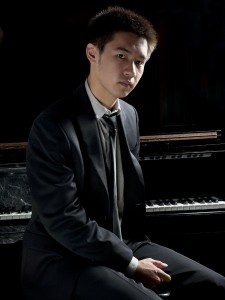UTAH CHAMBER ARTISTS, Libby Gardner Concert Hall, May 6
The Utah Chamber Artists completed their 2012-2013 season on Monday night with an intriguing program of music both old and new, featuring works that were orchestral, choral, and a mixture of the two.
Gabriel Fauré’s Messe Basse set the tone for the evening. The work, a mass written for mixed choir and orchestra, was remarkable for its nuanced color, sublime lightness and harmonic intrigue. Fauré disliked the bombast of so many of the masses previously written, and responded with a work that shows us that thoughtful restraint can be much more commanding than relying on force alone.
Next on the program was Haydn’s First Cello Concerto, with local cellist Matthew Zalkind providing the solo part. Haydn’s style is synonymous with classicism, and this work is a fine example. With a sensitive and precise orchestra behind him, Zalkind delivered a splendid reading of the concerto. Even by today’s standards, Haydn’s writing for cello is technically demanding in this work, and Zalkind managed to maneuver through the piece with a nimble technique and admirable musicianship. The second movement, though, is where Zalkind’s strengths really shone: I’ve seldom heard such exquisitely crafted phrases, and certainly not from a soloist so young.
The second half of the concert featured a choral work by modern composer Morten Lauridsen, Les Chansons Des Roses. Lauridsen’s music is firmly tonal, and this particular work alternated between sections of busy, detailed diction and sections of long, flowing phrases of delicate beauty. The choir handled the music with accuracy and subtlety.
The evening ended on a lighter note, with a Hales arrangement of Fred E. Ahlert’s jazzy I’m Gonna Sit Right Down and Write Myself a Letter. The tone of the music is bright and upbeat, but perhaps this is a bit ironic. With a refrain containing the line “I’m Gonna Sit Right Down and Write Myself a Letter, and pretend it came from you,” one might wonder.
Barlow Bradford’s dedication to leadership, thoughtful programming and skilled conducting has made the Utah Chamber Artists’ concerts an indispensable part of the Salt Lake City art music scene. I’m looking forward to next season.

